
Bathing is the immersion of the body, wholly or partially, in a medium, usually a liquid or heated air. It may be for personal hygiene, religious ritual, or therapeutic purposes. By analogy, especially as a recreational activity, the term is also applied to sun bathing and sea bathing.
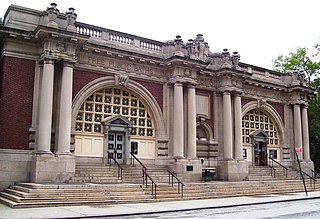
Public baths originated when most people in population centers did not have access to private bathing facilities. Though termed "public", they have often been restricted according to gender, religious affiliation, personal membership, and other criteria.
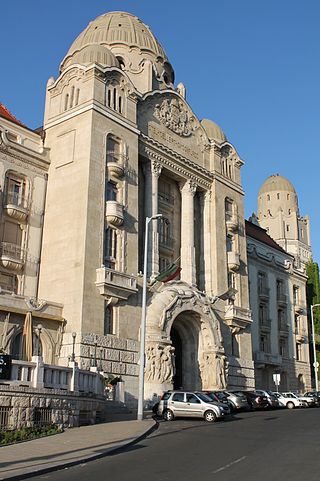
The Gellért Thermal Bath, also known as the Gellért Baths, is a bath complex in Budapest in Hungary. It is part of the famous Hotel Gellért in Buda.

The banya is a traditional Russian steam bath that utilizes a wood stove. It is a significant part of Russian culture, and is typically conducted in a small room or building designed for dry or wet heat sessions. The high heat and steam cause bathers to perspire.

Victoria Baths is a Grade II* listed building, in the Chorlton-on-Medlock area of Manchester, England. The baths opened to the public in 1906 and cost £59,144 to build. Manchester City Council closed the baths in 1993 and the building was left empty. A multimillion-pound restoration project began in 2007. As of 2024, the building is on English Heritage's Heritage at Risk Register.

The Public Library and Baths on Moseley Road, Balsall Heath, form one of many pairings of baths and libraries in Birmingham, England.
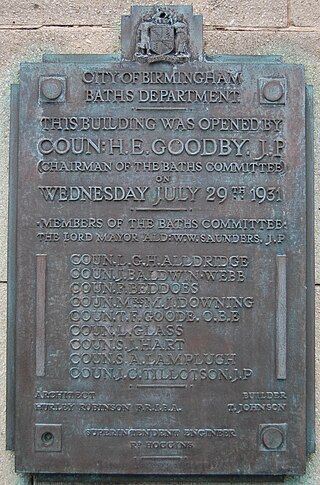
The Birmingham Baths Committee was an organisation responsible for the provision and maintenance of public swimming and bathing facilities. Birmingham City Council funded, constructed and ran bathing facilities throughout the city. The movement to develop baths and wash houses in Britain had its impetus with the rapid urbanisation of the Industrial Revolution, which was felt acutely in Birmingham, one of England's powerhouses.

The Baths of Agrippa was a structure of ancient Rome, Italy, built by Marcus Vipsanius Agrippa. It was the first of the great thermae constructed in the city, and also the first public bath.
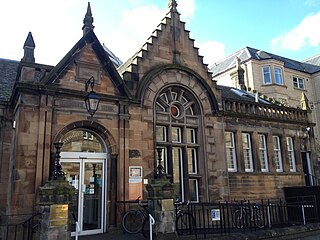
Warrender Swim Centre – traditionally known as Warrender Baths – is a swimming pool and fitness complex that opened in 1887 in Marchmont, Edinburgh.

The City Baths, located at 420 Swanston Street, Melbourne, Victoria, Australia, opened in 1904 as public baths, with swimming pools and bathing facilities. Extensively renovated in the early 1980s, it is now considered one of Melbourne's most architecturally and historically significant buildings.
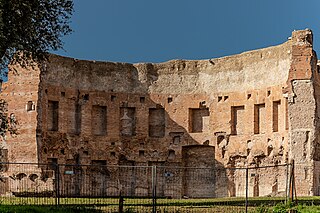
Bathing played a major part in ancient Roman culture and society. It was one of the most common daily activities and was practised across a wide variety of social classes. Though many contemporary cultures see bathing as a very private activity conducted in the home, bathing in Rome was a communal activity. While the extremely wealthy could afford bathing facilities in their homes, private baths were very uncommon, and most people bathed in the communal baths (thermae). In some ways, these resembled modern-day destination spas as there were facilities for a variety of activities from exercising to sunbathing to swimming and massage.

Arlington Baths Club is a non-profit member-run swimming club in Glasgow. The Arlington Baths Club was the first swimming club in Glasgow and is located in a purpose-built Category A Listed Building that opened on 1 August 1871.

Cleveland Pools located in Hampton Row, Bath, Somerset, England is a semi-circular lido built to designs by John Pinch the Elder in 1815. It is believed to be the oldest public outdoor swimming pool in the UK. It is a Grade II* listed building.

Oasis Sports Centre is a leisure centre in Holborn, London, operated by Better on behalf of the London Borough of Camden.

The Asser Levy Recreation Center is a recreational facility in the Kips Bay neighborhood of Manhattan in New York City, composed of the Asser Levy Public Baths and Asser Levy Playground. It is bounded by East 23rd Street to the south, East 25th Street to the north, and FDR Drive to the east. Along with the former Asser Levy Place to the west, it was named after Asser Levy, one of New York City's first Jewish citizens and a strong and influential advocate for civil liberties.

Camberwell Public Baths opened in 1892 and has been in continuous operation as publicly funded community baths and more recently as a public leisure centre.
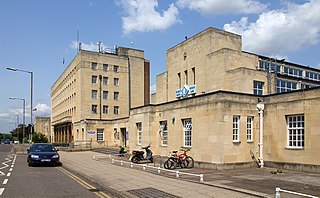
Mounts Baths is a public swimming baths in Northampton, England, built 1935—1936. It is notable for its Art Deco style.
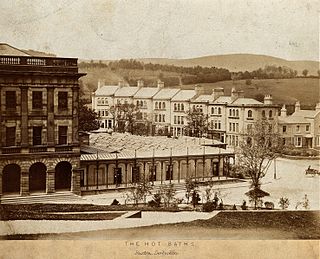
The Buxton Baths using natural thermal spring water are in Buxton, Derbyshire, England. The baths date back to Roman times and were the basis for developing Buxton as a Georgian and Victorian spa town. The present buildings of the Thermal Baths and the Natural Mineral Baths were opened in the 1850s. They are positioned either side of the Buxton Crescent at the foot of The Slopes in the town's Central Conservation Area. They are both Grade II listed buildings designed by Henry Currey, architect for the 7th Duke of Devonshire.
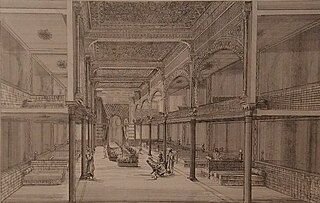
The Victorian Turkish bath is a type of bath in which the bather sweats freely in hot dry air, is then washed, often massaged, and has a cold wash or shower. It can also mean, especially when used in the plural, an establishment where such a bath is available.

Swindon Victorian Turkish Baths are Victorian Turkish baths in Swindon, England.





















